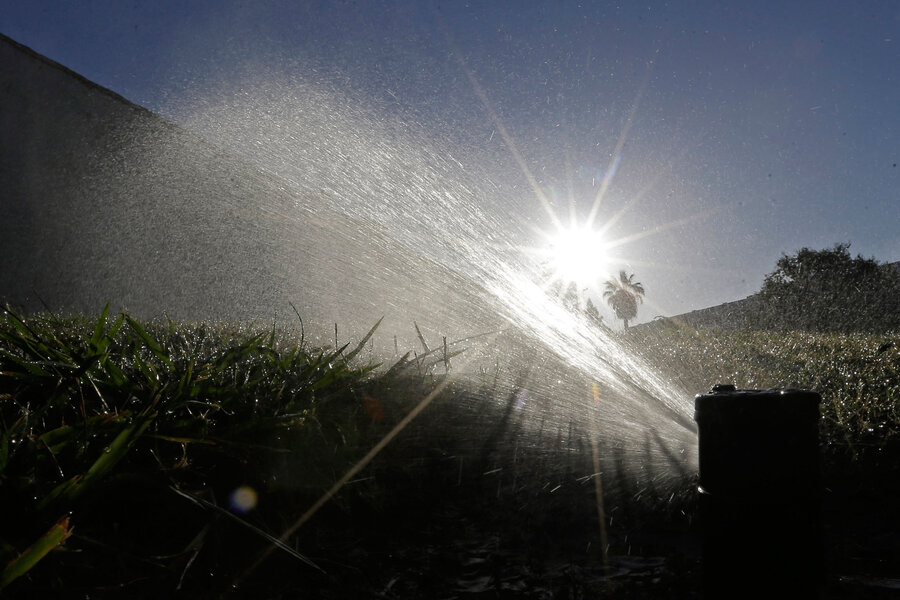Water in California: back to business as usual?
Loading...
A wet winter restored rain and snowfall levels in some areas of California to pre-drought levels, prompting questions about unpopular water conservation efforts.
During the past five years of drought, the state has undertaken a massive shift in the way residents and industries use water. Now that the emergency-level drought appears to have subsided, state officials are faced with a pivotal question: Should the measures taken to reduce water consumption remain in place as a hedge against future drought, or can Californians return to business as usual?
Democratic Gov. Jerry Brown is considering issuing an executive order to make the water restrictions permanent.
"We know that drought is becoming a regular occurrence, and water conservation must be a part of our everyday life," Governor Brown said in a statement.
The decision is in the hands of the Water Resource Control Board, which will vote on May 18 whether the original conservation order should come to an end.
The original conservation order, issued in April 2015 at the height of California's driest four-year period in history, required every water district in the state to reduce consumption by at least 20 percent.
In most areas, the conservation efforts met the goal and more, saving water use statewide by nearly 25 percent. The amount saved could supply 17 percent of the state’s population with water for a year.
The success of conservation efforts hinged, in no small part, on the buy-in of concerned residents around the state. Many were proactive about adopting water-conservative landscaping and adopting conservation-friendly programs like the StormCatcher Project, which captures rainwater to stop pollution from reaching the ocean and save water.
Many of the state water districts have also implemented incentives for replacing water-dependent lawns and yards and adopted shaming techniques to blast high-profile Californians who refused to conserve.
If the order continues, it would require each water district in the state to continue reporting water usage monthly. Residents would be barred from letting water from sprinklers run off into the street or washing cars at home without the use of a nozzle to help conserve.
Additional strategies would be required by the plan to force urban, farm, and water districts to allocate resources and layout emergency plans if the drought continues into 2017.
So far, Brown has appeared unrelenting in his conservation efforts, despite calls from water agencies to relax the order after a positive winter.
Brown and many of the state water officials are working on "making permanent the idea that conservation programs are not a drought-only policy,"said Peter Gleick, president of the Pacific Institute think-tank on water policy, reported the Associated Press.
"Even without a drought emergency, we have to do a better job of monitoring and measuring and managing water. There's just not enough of it anymore for everybody," Mr. Gleick added.
This report contains material from the Associated Press.








